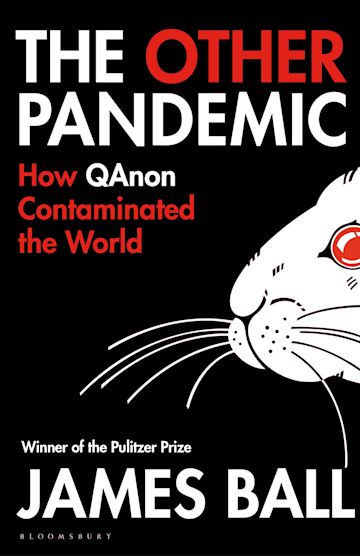The Other Pandemic: How QAnon Contaminated the World
By James Ball
Bloomsbury Press
ISBN: 978-1-526-64255-4
One of the weirdest aspects of the January 6 insurrection at the US Capitol building was the mismatched variety of flags and causes represented: USA, Confederacy, Third Reich, Thin Blue Line, American Revolution, pirate, Trump. And in the midst: QAnon.
As journalist James Ball tells it in his new book, The Other Pandemic, QAnon is the perfect example of a modern, decentralized movement: it has no leader and no fixed ideology. Instead, it morphs to embrace the memes of the moment, drawing its force by renewing age-old conspiracy theories that never die. QAnon’s presence among all those flags – and popping up in demonstrations in many other countries – is a perfect example.
Charles Arthur’s 2021 book Social Warming used global warming as a metaphor for social media’s spread of anger and division. Ball prefers the metaphor of public health. The difference is subtle, but important: Arthur argued that social media became destabilizing because no one chose to stop it, where Ball’s characterization implies less agency. People have less choice about being infected with pathogens, no matter how careful they are.
Ball divides the book into four main sections reflecting the stages of a pandemic: emergence, infection, transmission, convalescence. He covers some of the same ground as Naomi Klein in her recent book Doppelganger. But Ball spent his adolescence goofing around on 4chan, where QAnon was later hatched, while Klein lets her personal story lead her into Internet fora. In other words, Klein writes about Internet culture from the outside in, while Ball writes from the inside out. Talia Lavin’s Culture Warlords, on the other hand, focused exclusively on investigating online hate..
“Goofing around” and “4chan” may sound incompatible, but as Ball tells it, in the early days after its founding in 2003, 4chan was anarchic and fun, with roots in gaming culture. Every online service I’ve known back to 1990 has had a corner like this, where ordinary rules of polite society were suspended and transgression was largely ironic, even if also obnoxious. The difference: 4chan’s culture spread well beyond its borders, and its dark side fuelled a global threat. The original QAnon posting arrived on 4chan in 2017, followed quickly by others. Detailed, seemingly knowledgeable, and full of questions for readers to “research”, they quickly attracted backers who propagated them onto much bigger sites like YouTube, which turned a niche audience of thousands into a mass audience of millions.
A key element of Ball’s metaphor is Richard Dawkins’ 1976 concept of memes: scraps of ideas that use us to replicate themselves, as biological viruses do. To extend the analogy, Ball argues that we shouldn’t blame – or dismiss as stupid – the people who get “infected” by QAnon.
This book represents an evolution for Ball. In 2017’s Post-Truth, he advocated fact-checking and teaching media literacy as key elements of the solution to the spread of misinformation. Here, he acknowledges that this approach is only a small part of containing a social movement that feeds on emotional engagement and doesn’t care about facts. In his conclusion, where he advocates prevention rather than cure and the adoption of multi-pronged strategies analogous to those we use to fight diseases like malaria, however, there are echoes of that trust in authority. I continue to believe the essential approach will be nearer to that of modern cybersecurity, similarly decentralized and mixing economics, the social sciences, psychology, and technology, among others. But this challenge is so big that no one metaphor is enough to contain it.

3 thoughts on “Review: The Other Pandemic”